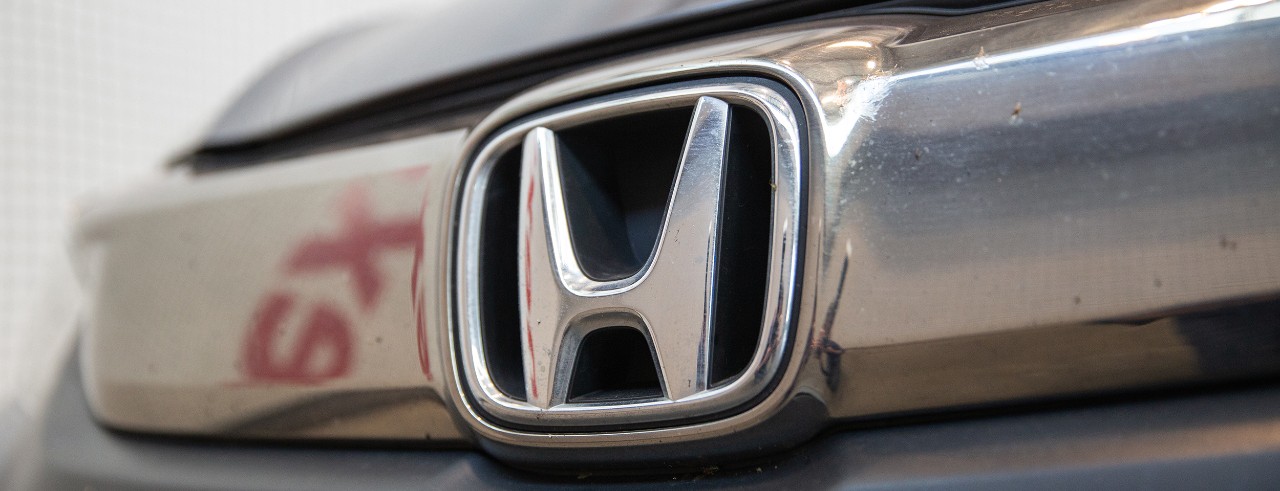
How can your car make roads safer?
UC joins Honda and ODOT to show how cars can collect data to prioritize road improvements
Every driver has cringed after hitting a pothole hard, hoping the car wouldn’t steer differently or make any worrisome new sounds.
But what if your own car could report that pothole to the people who fix them?
The University of Cincinnati will work with Honda Motor Co., infrastructure engineering firm Parsons Corp., consulting firm i-Probe and the Ohio Department of Transportation to demonstrate that new cars can evaluate roads.
“We are very excited to be part of this effort to help ODOT in achieving their mission of providing a transportation infrastructure that is safe, accessible, well maintained and positioned for the future.” said Munir Nazzal, professor of civil engineering in UC’s College of Engineering and Applied Science.
“The focus is on the condition of the road, but it applies to other important things from signs to guardrails to barriers to pavement markings,” Nazzal said. “Safety is the priority. If we can reduce the number of accidents, we can save lives.”
“We believe this initiative will be a paradigm shift in road infrastructure asset evaluation, management and maintenance,” said Sue Bai, chief engineer and chief of data business at American Honda Motor Co., Inc.

UC College of Engineering and Applied Science Professor Munir Nazzal explains how UC's system will help the Ohio Department of Transportation identify safety issues such as potholes, missing or obscured signs or faded road markings. Photo/Andrew Higley/UC Marketing + Brand
DriveOhio Executive Director Preeti Choudhary said Ohio is excited about applying technology in new ways to improve public safety.
“Integrating vehicle data into our operations has the potential to be a game-changer when it comes to better serving Ohio drivers and increasing roadway safety for all,” Choudhary said.
The two-year project also helps prepare roads for self-driving cars by identifying improvements such as where pavement markings are needed or refining intersection information on digital maps. Nazzal’s lab has invested years into artificial intelligence systems that can detect deficiencies in infrastructure in real time.
“In this project, we will be testing and validating some of these algorithms as well as assisting in integrating them into Honda’s vehicles,” he said.
This project with Honda will be a way for us as an academic institution to help Ohio and other states provide a transportation infrastructure that is safe, accessible, well maintained and positioned for the future.
Munir Nazzal, UC Center for Smart, Sustainable and Resilient Infrastructure
Nazzal is director of UC’s Center for Smart, Sustainable and Resilient Infrastructure, which uses advanced technology and artificial intelligence to help evaluate and improve the safety and sustainability of infrastructure and to prepare it for the next generation of transportation.
Cars today are equipped with a suite of cameras and sensors designed to improve driving safety on the road such as Honda’s Advanced Driver Assistive Systems. But these tools can serve a dual purpose, Nazzal said.
For example, the vehicle could detect if a stop sign is missing or obscured by overgrown foliage. Cars could relay this information in real time to state transportation officials to identify, prioritize and resolve problems more quickly, Nazzal said.
According to AAA, potholes alone cost American drivers $26 billion in car repairs each year.
Cars also could identify which roads have no shoulders or low shoulders, Nazzal said.

UC Professor Munir Nazzal is director of the Center for Smart, Sustainable and Resilient Infrastructure. Photo/Andrew Higley/UC Marketing + Brand
His lab will use two Honda vehicles for a demonstration project showing the valuable infrastructure data the vehicles can collect while traveling on Ohio’s roads.
“Our infrastructure might be changing faster than online maps are updated,” he said. “The autonomous vehicles might be expecting the stop sign to be at a certain location, but if it’s moved 10 feet, the vehicle could stop in the middle of an intersection, which could be dangerous.”
UC’s Office of Research & Digital Futures is happy to help Nazzal scale up his lab’s work to maximize its impact, UC Vice President for Research Patrick Limbach said.
“Through cutting-edge technology and AI, UC’s Center for Smart, Sustainable, and Resilient Infrastructure is enhancing the safety, sustainability and readiness of infrastructure and advancing the bioeconomy,” Limbach said.
“The UC Office of Research accelerates scientific discovery, positively impacting our society and enhancing the economy from transportation to energy.”
Featured image at top: UC is working with Honda Motor Co., infrastructure engineering firm Parsons Corp., consulting firm i-Probe and the Ohio Department of Transportation to demonstrate that new cars can evaluate roads. Photo/Andrew Higley/UC Marketing + Brand
Next Lives Here
The University of Cincinnati is classified as a Research 1 institution by the Carnegie Commission and is ranked in the National Science Foundation's Top-35 public research universities. UC's graduate students and faculty investigate problems and innovate solutions with real-world impact. Next Lives Here.
Related Stories
Study finds police officers face higher long-term health risks
January 2, 2026
J.C. Barnes, a University of Cincinnati professor, is interviewed by Spectrum News about new research showing that the physical and psychological demands of law enforcement can contribute to earlier deaths.
Two UC-backed startups score $200K each from state
December 23, 2025
Innovative startup ventures TapIn and Saturn Sports rose from the UC Venture Lab to receive $200,000 each in funding through Ohio Third Frontier grants.
Challenges for veterans in the workforce
December 22, 2025
A new research review examines how veterans and their families impact the economy.
